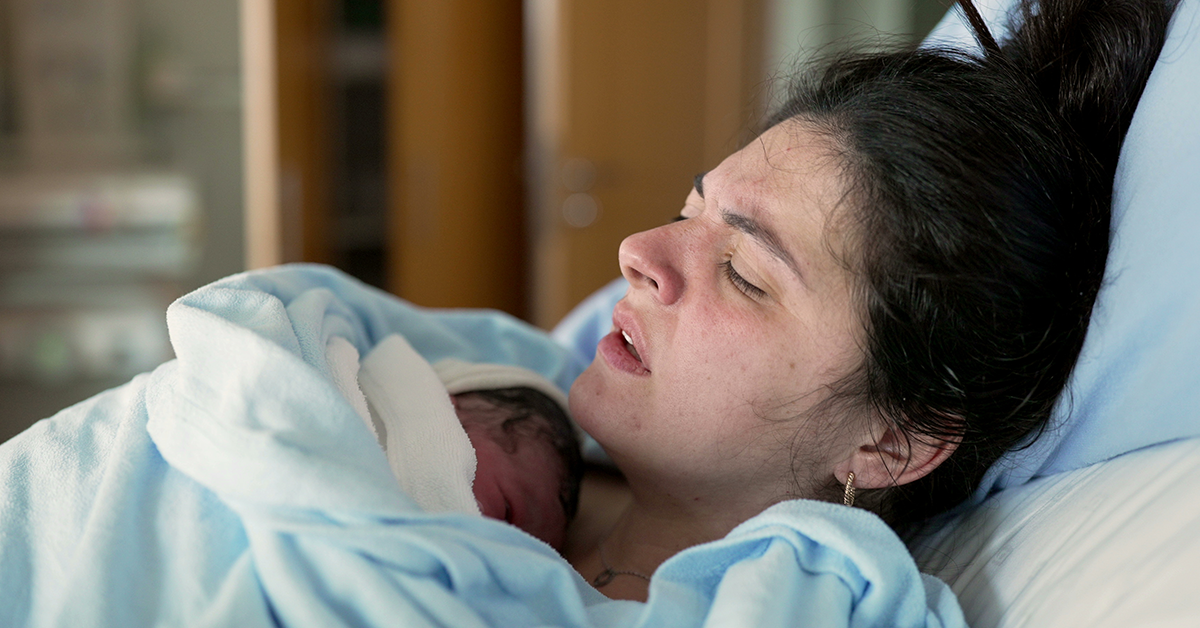[21] Annotation: Products liability: flammable clothing, 1 ALR4th 251.
See Wilson v. Bradlees of New England (1996, CA1 NH) 96 F3d 552, cert den (US) 137 L Ed 2d 218, 117 S Ct 1083 (minor sustained severe burns when the sweatshirt he was wearing came in contact with an electric stove and court held that <sst ref.id=”I03NKOG”>Flammable Fabrics Act did not preempt a state tort claim or warranty claim against the sweatshirt manufacturer and seller.)
[22] Annotation: Products liability: defective heating equipment, 1 ALR4th 748.
[23] Annotation: Liability of manufacturer, seller, or installer for personal injury caused by door glass, 84 ALR3d 877.
[24] Annotation: Liability of one selling or distributing liquid or bottled fuel gas, for personal injury, death, or property damage, 41 ALR3d 782.
[25] Annotation: Products liability: defective heating equipment, 1 ALR4th 748.
[26] Annotation: Products liability: perfumes, colognes, or deodorants, 46 ALR4th 1197.
[27] Annotation: Products liability: modern cases on explosion or breakage of beverage bottles, 36 ALR4th 419.
When a bottler incorporates a defective bottle into its packaging of its soft drink product, and places its name on the bottle, it is the manufacturer of the product and can be held liable. But the bottler can obtain indemnification from the original manufacturer of the bottle. See Burke v. Safeway Stores, Inc. (1989, La App 2d Cir) 554 So 2d 184, involving an exploding bottle which injured the hand of a woman who thereafter could not work as either a legal secretary or as a cosmetologist.
[28] Annotation: Products liability: personal injury or death allegedly caused by defect in steering system in motor vehicle, 100 ALR3d 158.
Court found that motor vehicle manufacturer was liable for injuries stemming from its failure to warn of the hazards of driving too close to the steering wheel. Bresnahan v. Chrysler Corp., 65 Cal. App. 4th 1149, 76 Cal. Rptr. 2d 804, Prod. Liab. Rep. (CCH) &p;15321 (2d Dist. 1998).
[29] Annotation: Products liability: personal injury or death allegedly caused by defect in steering system in motor vehicle, 100 ALR3d 158.
[30] Annotations: Products liability: liability for injury or death allegedly caused by defective tires, 81 ALR3d 318. Products liability: tire rims and wheels, 16 ALR4th 137.
But it should be noted that the fact that a tire fails, without other proof that it was defective, is not proof that it was dangerous and defective. See discussion in Traut v. Uniroyal, Inc. (1989, La App 4th Cir) 555 So 2d 655 (superseded by statute on other grounds as stated in Clement v. Griffin (La App 4th Cir) 634 So 2d 412).
Estate of decedent sued manufacturer of tire and tire rim which exploded, claiming, among other things, a failure to warn. Summary judgment improperly granted in favor of tire rim manufacturer where adequacy of content and method of warning is matter for fact-finder. Reynolds v. Bridgestone/Firestone, Inc. (1993, CA11 Ala) 989 F2d 465.
In a defective tire action, the Supreme Court of Nevada properly excluded evidence of the tire’s age when age was not a factor in the defect action. Uniroyal Goodrich Tire Co. v. Mercer (1995) 111 Nev 318, 890 P2d 785, reh den (Sep 28, 1995).
[31] Annotations: Products liability: liability for injury or death allegedly caused by defective tires, 81 ALR3d 318. Products liability: tire rims and wheels, 16 ALR4th 137.
[32] Annotation: Products liability: defective vehicular gasoline tanks, 96 ALR3d 265.
[33] See <ntc ref.id=”I03QD6L”>Swartz, E.M., Swartz, F.A., and Cantor, A., Seat-Belt Injury Litigation, 24 Trial Magazine 46 (No. 11, November 1988).
Texas statute barring evidence of seatbelt use or nonuse in a civil trial does not insulate seatbelt manufacturers from liability for defective seatbelt restraint systems. Bridgestone/Firestone, Inc. v. Glyn-Jones (1994, Tex) 878 SW2d 132, 48 ALR5th 787.
See §2:3 infra, p. 126, n. 13.50.
Driver sued automobile manufacturer for injuries sustained in rollover. Manufacturer moved for summary judgment. Court denied summary judgment, finding that the driver’s use of the seatbelt remained a genuine issue of material fact. Pries v. Honda Motor Co. (1994, CA7 Ind) 31 F3d 543, 41 Fed Rules Evid Serv 147.
Attocknie v. Carpenter Mfg. (1995, Okla App) 901 P2d 221 (<sst ref.id=”I03QDTB”>National Traffic and Motor Vehicle Safety Act does not expressly preempt a design defect claim for failure to install seatbelts on a school bus);Doyle v. Volkswagenwerk Aktiengelellschaft, 114 F.3d 1134, Prod. Liab. Rep. (CCH) &p;14987 (11th Cir. 1997), cert. denied, 118 S. Ct. 1300 (U.S. 1998) (court held that design defect claim against automobile manufacturer whose passenger restraint system complied with federal motor vehicle standards was not preempted by the <sst ref.id=”I03QE6A”>National Traffic and Motor Vehicle Safety Act). Hyundai Motor Co. v. Alvarado, 974 S.W.2d 1, Prod. Liab. Rep. (CCH) &p;15273 (Tex. 1998), reh’g of cause overruled, (Sept. 24, 1998) (Court found that design defect action against motor vehicle manufacturer for failure to install lap belts was neither expressly nor impliedly preempted by the <sst ref.id=”I03QEKD”>National Traffic and Motor Vehicle Safety Act); Gentry v. Volkswagen of America, Inc., 238 Ga. App. 785, 521 S.E.2d 13, Prod. Liab. Rep. (CCH) &p;15577 (1999) (state tort claim alleging automobile restraint system was defectively designed was not preempted by <sst ref.id=”I03QERQ”>National Traffic and Motor Vehicle Safety Act.)
Evidence of failure to wear seat belt inadmissible to establish fault. Hopper v. Carey, 716 N.E.2d 566 (Ind. Ct. App. 1999).
Court found state law claim that passive restraint system in motor vehicle was defectively designed was not preempted by <sst ref.id=”I03QF03″>NTMVSA even though the design of said passive restraint system design satisfied the safety standards set forth under the Act. King v. Ford Motor Co., 209 F.3d 886, 2000 FED App. 137P (6th Cir. 2000), cert. denied, 121 S. Ct. 386, 148 L. Ed. 2d 298 (U.S. 2000).
Oklahoma Supreme Court held the statute barring admission of evidence on seatbelt use or nonuse is inapplicable in products liability cases where the evidence of usage is being offered to show the condition of the restraint. Bishop v. Takata Corp., 2000 OK 71, 12 P.3d 459 (Okla. 2000).
Van manufacturer was negligent in failing to equip rear passenger seats with lap/shoulder belts rather than just lap belts. Manufacturer’s prior tests supported finding that shoulder belts offered protection against head injuries, experts testified that the automotive industry knew that shoulder belts, as opposed to lap belts, restrained forward movement of passengers and the manufacturer had sold the van in foreign countries with lap/shoulder belts for rear passengers. Trull v. Volkswagen of America, Inc., 311 F.3d 58, Prod. Liab. Rep. (CCH) &p;16445, 54 Fed. R. Serv. 3d 382 (1st Cir. 2002).
In a crashworthiness action, the court held that evidence of vehicle occupant’s failure to fully buckle his seatbelt (occupant used the automatic two-point shoulder belt, but did not use the manual lap belt) was inadmissible under a state statute. Carrasquilla v. Mazda Motor Corp., 166 F. Supp. 2d 169 (M.D. Pa. 2001).
Florida Supreme Court held that comparative fault issues are not to be considered in products liability actions based on the crashworthiness doctrine. D’Amario v. Ford Motor Co., 806 So. 2d 424, Prod. Liab. Rep. (CCH) &p;16211 (Fla. 2001).
In a strict liability action against a car manufacturer claiming the car’s defective seat belt caused a motorist’s ultimate death, the court held that plaintiff was entitled under Fed. R. Evid. 406 to submit habit evidence to support his claim that he was wearing his seatbelt at the time of the accident. Babcock v. General Motors Corp., 299 F.3d 60, Prod. Liab. Rep. (CCH) &p;16390, 59 Fed. R. Evid. Serv. 779, 53 Fed. R. Serv. 3d 1225 (1st Cir. 2002).
The appeals court found that the lower court incorrectly weighed the evidence when it granted a child restraint manufacturer judgment as a matter of law. Plaintiff’s 18-month-old child was ejected from his child restraint system during a collision. The plaintiff claimed that a defect in the restraint system caused secondary injuries to his child beyond that which he would have sustained in the primary collision. The appeals court found that in determining whether there existed a manufacturing defect, the lower court failed to include a vehicle collision in the normal use of the child restraint system. The appeals court reasoned that the main purpose of a child restraint system is to protect a child in the event of a collision. Edic ex rel. Edic v. Century Products Co., 364 F.3d 1276, Prod. Liab. Rep. (CCH) P 16968, 63 Fed. R. Evid. Serv. 1314 (11th Cir. 2004).
[34] National Highway Traffic Safety Administration issued a final rule mandating the manufacture of motor vehicles with air bags. See 58 F.R. 46551 (No. 169) codified at 49 C.F.R. pts. 571 and 585. The rule also requires labels bearing air bag information in the motor vehicles and additional air bag information in the owner’s manual.
Neither the <sst ref.id=”I03RSCJ”>National Traffic and Motor Vehicle Safety Act nor the Federal Motor Vehicle Safety Standards preempt a design defect claim against an automobile manufacturer for failure to equip a car with an airbag. Loulos v. Dick Smith Ford, Inc. (1994, Mo App) 882 SW2d 149. See also Heiple v. C.R. Motors (1995, Pa Super) 1995 Pa Super LEXIS 2713, remanded 446 Pa Super 310, 666 A2d 1066 (<sst ref.id=”I03RSRZ”>National Traffic and Motor Vehicle Safety Act did not expressly preempt a design defect claim against a motor vehicle manufacturer for failure to install air bags); Tebbetts v. Ford Motor Co. (1995) 140 NH 203, 665 A2d 345, cert den (US) 133 L Ed 2d 726, 116 S Ct 773, reh den (US) 134 L Ed 2d 112, 116 S Ct 1036 (court found that state-based design defect claim against automobile manufacturer for failure to install air bags was not preempted by the <sst ref.id=”I03RT4Y”>National Traffic and Highway Safety Act.)
Wilson v. Pleasant (1995, Ind) 660 NE2d 327, reh den (Mar 7, 1996) (<sst ref.id=”I03S1MN”>NTMVSA does not preempt a state law action for negligent failure to install an airbag.)
But see Estate of Montag by & Through Montag v. Honda Motor Co. (1996, CA10 Colo) 75 F3d 1414, cert den (US) 136 L Ed 2d 24, 117 S Ct 61 (National Traffic and Motor Vehicle Safety Act impliedly preempted plaintiff’s design defect claim against the automobile manufacturer for failure to equip automobile with airbag); Waters v. Ford Motor Co. (1996, ED Pa) 1996 WL 114791, Prod Liab Rep (CCH) &p;14,581 (court held that design defect action against motor vehicle manufacturer for failure to equip vehicle with air bag was impliedly preempted by the National Traffic and Motor Vehicle Safety Act.)
See Bresnahan v. Chrysler Corp. (1995, 2nd Dist) 32 Cal App 4th 1559, 38 Cal Rptr 2d 446, 95 Daily Journal DAR 2942, reh den (Cal App 2nd Dist) 95 CDOS 1772, 95 Daily Journal DAR 2942 and review den (May 11, 1995) (applying consumer-expectation analysis to actions involving air bag injuries.)
Collazo-Santiago v. Toyota Motor Corp., 957 F. Supp. 349, Prod. Liab. Rep. (CCH) &p;14978, 46 Fed. R. Evid. Serv. (LCP) 1264 (D.P.R. 1997) (court held Federal Motor Vehicle Safety Standards did not preempt a claim that an airbag was defectively designed because the regulations govern the performance criteria for the airbags, not the airbag design); Minton v. Honda of American Mfg., Inc., 80 Ohio St. 3d 62, 684 N.E.2d 648, Prod. Liab. Rep. (CCH) &p;15083 (1997) (Ohio Supreme Court held that state products liability claim for failure to equip automobile with air bag was neither expressly nor impliedly preempted by the <sst ref.id=”I03T6K2″>National Traffic and Motor Vehicle Safety Act); Munroe v. Galati, 189 Ariz. 113, 938 P.2d 1114, Prod. Liab. Rep. (CCH) &p;14979 (1997) (court held that defect claim based on lack of air bag was not preempted.)
Drattel v. Toyota Motor Corp., 92 N.Y.2d 35, 677 N.Y.S.2d 17, 699 N.E.2d 376, Prod. Liab. Rep. (CCH) &p;15444 (1998) (court found that <sst ref.id=”I03T73X”>NTMVSA does not preempt state law claims for failure to equip car with air bags.)
The court found a jury issue existed as to whether a motor vehicle air bag system was defectively designed or manufactured in that it did not deploy in a side-impact collision. The court reasoned that the manufacturer failed to prove as a matter of law that the impact was not a frontal impact or that the force of the collision was not strong enough to warrant deployment of the air bag. Moreover, the court found the manufacturer failed to establish the manufacturer could not have used a safer alternative design. Sipes v. General Motors Corp., 946 S.W.2d 143 (Tex. App. Texarkana 1997), reh’g overruled, (June 3, 1997) and Rule 130(d) motion filed, (June 19, 1997).
Standard no. 213, “Child Restraint Systems,” was amended. Specifically, the air bag warning label was modified to read that rear-facing car seats must never be placed in the front seat with an air bag. 62 FR 30464 (No. 107).
The court found that New Jersey’s Products Liability Statute does not bar a claim against a vehicle manufacturer for negligent installation of an air bag. Thomas v. Ford Motor Co., 70 F. Supp. 2d 521 (D.N.J. 1999).
Court held that driver injured in automobile accident was not required to proffer expert testimony to establish prima facie product liability case for defective air bag operation. Silvestri v. General Motors Corp., 210 F.3d 240 (4th Cir. 2000).
[35] Annotation: Products liability: defective vehicular gasoline tanks, 96 ALR3d 265.
[36] Annotation: Products liability: defective vehicular gasoline tanks, 96 ALR3d 265.
[37] Annotation: Products liability: toys and games 95 ALR3d 390.
Federal government brought a civil forfeiture action, under <sst ref.id=”I03TGLC”>Federal Hazardous Substances Act, 15 U.S.C.A. §§1261-1276 (Act), against cans of foam finger paint. United States v. Articles of Banned Hazardous Substances (1994, CA2 Conn) 34 F3d 91. The paint manufacturer intervened and the lower court found for the manufacturer on the grounds that the foam finger paint was exempt from being a “banned hazardous substance” under the Act as the paint was an educational art material. The Appeals court overturned this ruling, finding that the foam finger paint, dispensed from a shaving cream-like dispenser and intended for children ages three and older, was a hazardous substance under the Act as the dispenser was flammable. The court rejected an attempt to pigeon-hole the paint as an art material exempt from being a “banned hazardous substance” under the Act as this exemption is contingent upon the item being ‘my “intended for use by children who have attained sufficient maturity, and may reasonably be expected, to read and heed such directions and warnings.” ‘ United States v. Articles of Banned Hazardous Substances, 34 F3d 91, 97 quoting 15 U.S.C.A. §1261(q)(1). This product was marketed to children three and older who could not be expected to “read and heed” a warning label. The court also rejected the argument that adult supervision of children too young to read would suffice to exempt the material from the Act.
CPSC reported that 25 children died from toy-related injuries in 2001 and an estimated 255,100 peopled went to U.S. hospital emergency rooms with toy-related injuries. This was an increase from 2000 which has been attributed to incidents with unpowered scooters. <ntc ref.id=”I05DD8F”>CPSC, Toys, 7 Consumer Product Safety Review 4 (Winter 2003). And, in a CPSC memorandum dated 10/10/03 detailing toy-related deaths and injuries from 1/1/02-12/31/02 found there were 13 toy related deaths and 212,400 estimated injuries.
CPSC reported that 13 children died in toy-related deaths in 2002 and there were an estimated 212,400 toy-related injuries treated in United States hospital emergency rooms. CPSC, Toys, Consumer Product Safety Review 6 (Spring 2004).
In a CPSC memorandum dated 9/27/04, from Joyce McDonald, it stated that there were 11 toy-related deaths from January 1, 2003 to December 31, 2003, and 206,500 estimated toy-related injuries.
CPSC released new age determination guidelines for evaluating toys. <ntc ref.id=”I05DD9S”>CPSC, Age Determination Guidelines, 7 Consumer Prod. Safety Rev. 1 (Spring 2003). According to the CPSC, the 1985 guidelines were not addressing many toys presently on the market. For instance, the old guidelines did not address computer games, toys with embedded computer chips, educational software and cd’s. “Another prominent addition is a section called “Children’s Basic Abilities and Preferences,” which summarizes how children of different ages are likely to use any toy.” <ntc ref.id=”I00B1LM”>CPSC, Age Determination Guidelines, 7 Consumer Prod. Safety Rev. 1 (Spring 2003), 2. Other differences include the division of children under 12 months old into 3 four month age groups rather than the six month interval originally used. This division “more accurately reflects the more rapid growth and development of infants compared with children in other age groups.” <ntc ref.id=”I00B1SM”>CPSC, Age Determination Guidelines, 7 Consumer Prod. Safety Rev. 1 (Spring 2003), 2. “Q: Does the toy industry test its products according to these criteria? … .”The Small Parts Regulation doesn’t require firms to test their products according to these procedures.” <ntc ref.id=”I00B1SO”>CPSC, Age Determination Guidelines, 7 Consumer Prod. Safety Rev. 1 (Spring 2003), 2.
[38] Annotations: Products liability: air guns and BB guns, 94 ALR3d 291.
Products liability: firearms, ammunition, and chemical weapons, 15 ALR4th 909.
[39] In Aimone v. Walgreen’s Co. (1985, ND Ill) 601 F Supp 507, 2 UCCRS2d 458, the court held it was foreseeable that dangerous lawn darts would be treated by consumers as toys rather than sporting equipment and as a result, given to children to play with.
[40] 15-month-old child died of asphyxiation after a small block became lodged in his throat. The package contained no warnings of a choking hazard. The block satisfied all federal regulations concerning toy size and cautionary labeling. Parents of child sued the toy manufacturer and the retailer for strict liability and negligent design, manufacture and sale. The district court granted summary judgment in favor of the defendants. The appeals court overturned that ruling. With respect to the claim of negligent design, the Appeals court found that under a risk-utility analysis, the risk of a reasonably foreseeable user choking on the block is not so small to rule in favor of defendants. Although there were no reported deaths associated with this particular toy, there were 11 child deaths associated with asphyxiation from other small toys in one year. And, … “[w]e believe that an annual mortality rate of eleven is a ‘realistic threshold of risk’ … . The fact that the Playskool purple half column block has not been a contributor to the infant mortality rate until now may be simply happenstance from which we cannot conclude that the block will be safe for future reasonably foreseeable users.” Metzgar v. Playskool Inc. (1994, CA3 Pa) 30 F3d 459.
[41] ntc ref.id=”I05DMY9″>CPSC recalled Playskool’s 1-2-3 Swing for infants because the swing’s seat restraint can falsely appear locked and children can fall out of the swing. <ntc ref.id=”I05DN44″>Regional News In Brief, Boston Globe, May 16, 1995, p. 26.
<ntc ref.id=”I05DNB1″>CPSC press release no. 00-098 announced the “recall” of an infant swing after the death of 6 children. The term “recall”, however, is a misnomer as nowhere in the press release does it state that the product is, in fact, being recalled. Instead, it states only that “[the manufacturer] is offering a free, new safety restraint”. A far cry from a much needed recall.
[42] See §9:30.6, infra.
[43] In Wells v. Mattel, Inc. (no. N73611, San Diego Cty Superior Ct, Jan. 9. 1997), family of 9-year-old girl sued Mattel, claiming the Cabbage Patch Snacktime Kid doll removed a one-inch section of the girl’s scalp when the doll chewed the girl’s hair while she was sleeping. The parents had to tear the doll’s face off to release its hold on the child’s head. The family charges the doll was defectively designed as it lacked a gear reverse or an on/off switch to stop the doll’s chewing function. Additionally, the doll lacked warnings that a child’s hair could become caught in the doll’s mouth. <ntc ref.id=”I05ES05″>Press release, 12/31/96. On January 6, 1997, Mattel withdrew the dolls from the shelves and offered a refund to anyone that wished to return the doll. If these dolls were designed for safety, 35 children would have been spared needless injury.
[44] Court found that 8-year-old-boy proffered sufficient evidence to raise a jury issue as to the negligent design of a plastic toy star. The boy pressed one of the toy stars against a helium filled balloon, the balloon exploded, propelling the star through the air. The star punctured the boy’s left eye. Bowden v. Wal-Mart Stores, Inc. 124 F. Supp. 2d 1228 (Ala 2001), see infra §9:11, n.18.
[45] See, §9:30.3. Playground equipment (new), infra.
[46] Annotation: Liability of swimming facility operator for injury or death allegedly resulting from defects of diving board, slide, or other swimming pool equipment, 85 ALR3d 849.
[47] Annotation: Products liability: swimming pools and accessories, 6 ALR4th 492.
See cases discussed under §1:138, infra, p. 54, n. 15.
“Kids can drown in as little as one inch of water, and drowning is the second leading cause of accidental death in children,” Child 72 (August 1996).
[48] Annotation: Liability of swimming facility operator for injury or death allegedly resulting from defects of diving board, slide, or other swimming pool equipment, 85 ALR3d 849.
See Ryan v. KDI Sylvan Pools, Inc. (1990) 121 NJ 276, 579 A2d 1241, involving a claim by a social guest who was paralyzed after diving into a built-in home pool from a diving board built and provided by the defendant manufacturer; the appellate court held that a damage award of $500,000 was not excessive. The pool was defectively designed because it was equipped with a diving board which was unsafe given the configuration and depth of the pool.
Illustrative cases examining issues arising from swimming pool claims include:
Howard v. Poseidon Pools, Inc. (1987, 4th Dept) 134 App Div 2d 926, 522 NYS2d 388, 389-90, affd 72 NY2d 972, 534 NYS2d 360, 530 NE2d 1280 [issue of whether manufacturer of swimming pool is duty bound to warn experienced swimmers of dangers of quadriplegic and paraplegic injuries.]
In King v. National Spa and Pool Institute, Inc., 570 So. 2d 612, Prod. Liab. Rep. (CCH) &p;12720, 1 A.L.R.5th 1109 (Ala. 1990), the deceased dove into an in-ground vinyl-lined backyard pool from a diving board and suffered a broken neck and quadriplegia. He later died due to pneumonia secondary to quadriplegia. The pool met minimum standards for residential pools with diving boards published by a trade association. The court held if the manufacturer or installer of a pool relied on trade association standards, then the trade association could be liable if it breached the standard of reasonable care in regard to the design of such pools.
Dietrich v. Allstate Ins. Co. (1989, La App 1st Cir) 540 So 2d 358, cert den (La) 541 So 2d 898 and cert den (La) 541 So 2d 902 [issues relating to duty of pool installer and owner to properly light pool.]
Keep Reading
Want more? Here are some other blog posts you might be interested in.



